Habitat loss, persecution and environmental change have resulted in the decline of many of Britain's birds. A large number of these species are now on the Red List, making them the highest conservation priority.
These birds are scarce in Britain and should be observed according to guidance offered by local wildlife authorities.
Learn more about endangered wild birds with our guide to Britain's rarest birds, including how to identify, where to see and conservation efforts.
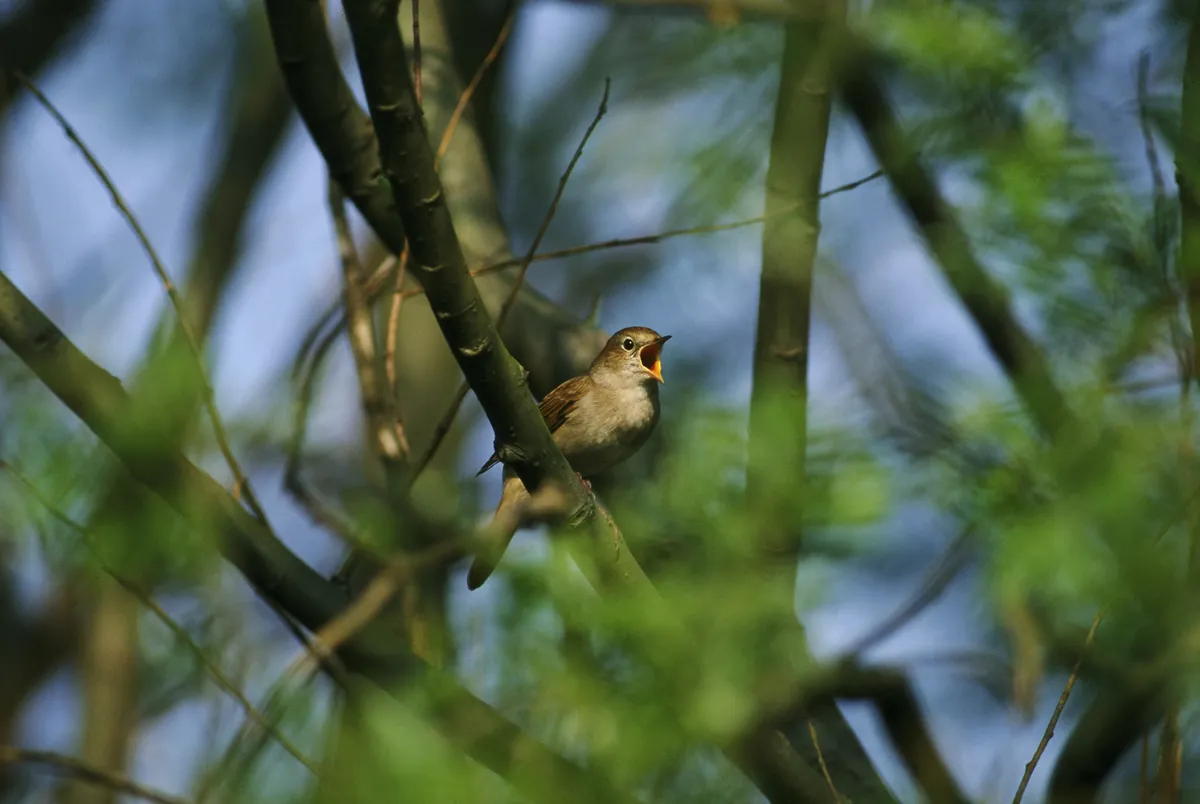
RSPB Birdwatcher’s Code
• Avoid going too close to birds or disturbing their habitats – if a bird flies away or makes repeated alarm calls, you’re too close. And if it leaves, you won’t get a good view.
• Stay on roads/paths where they exist and avoid disturbing habitats used by birds.
• Think about your fieldcraft. Disturbance is not just about going too close – a flock of birds on the foreshore can be disturbed from a mile away if you stand on the seawall.
• Playing a recording of calls to encourage a bird to respond can divert a territorial bird from other important duties. Never use birdsong to attract a species during breeding season.
Hen Harrier
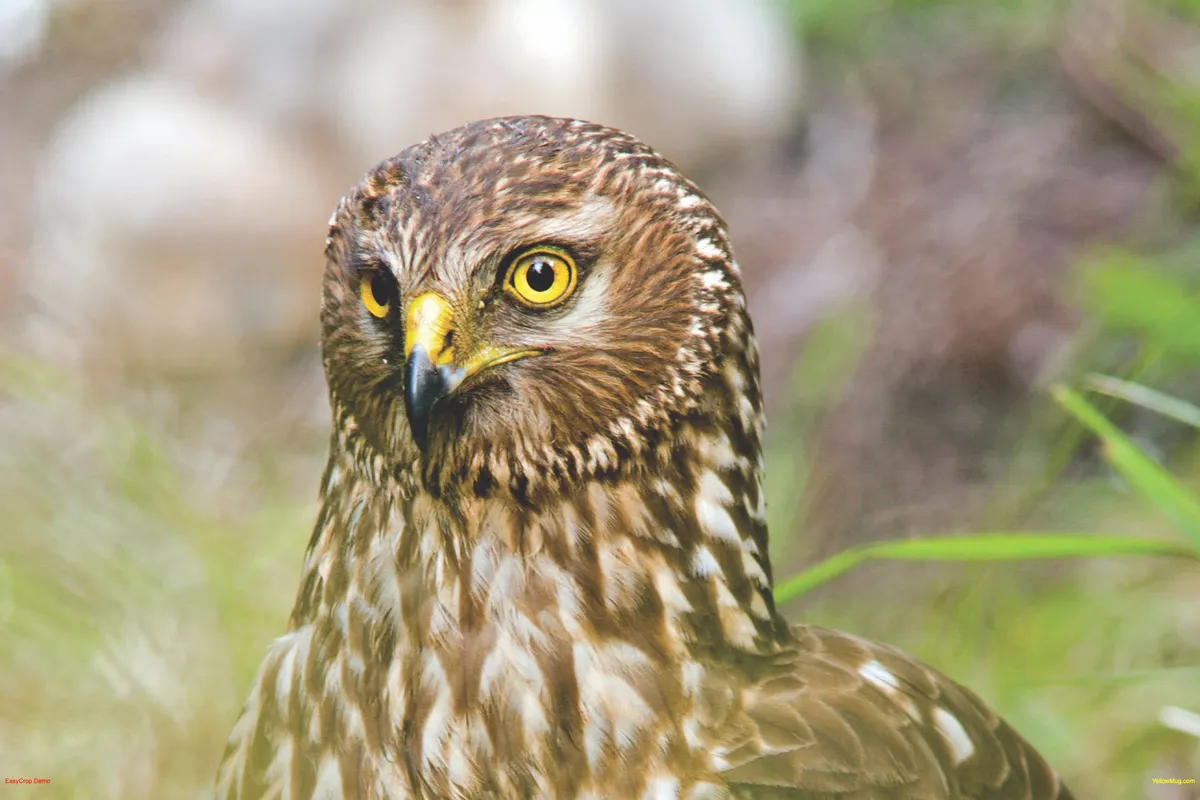
The elegant hen harrier is perhaps the most iconic bird of prey in the uplands of northern England, but it is also one of the most endangered birds in Britain. These large raptors wheel and soar above the moorland and, in late spring, perform a spectacular ‘sky dance’, exchanging tokens of their affection in mid-air to cement their bond.
These large (one-metre wingspan) mottled-brown (female) or light grey (male) birds of prey glide and hover over upland moors and pluck meadow pipits or voles from among the heather. Look out for their aerobatic courtship ‘sky dance’ in which birds call and wheel through the air.
There are an estimated 600 nesting pairs of hen harrier in the UK. The Forest of Bowland in rural Lancashire supports one of the largest populations of hen harriers in England.
Around five per cent of the UK’s harrier population lives on the Isle of Man, and most of Scotland’s Hebridean islands support resident populations of hen harrier. Loch Gruinart on Islay, the uplands of Arran and the Isle of Ulva off Mull are promising locations to spot a harrier. The Antrim hills and lakes of Fermanagh are home to the majority of Northern Ireland’s breeding population of hen harriers.
Guide to hen harriers
Nightjar
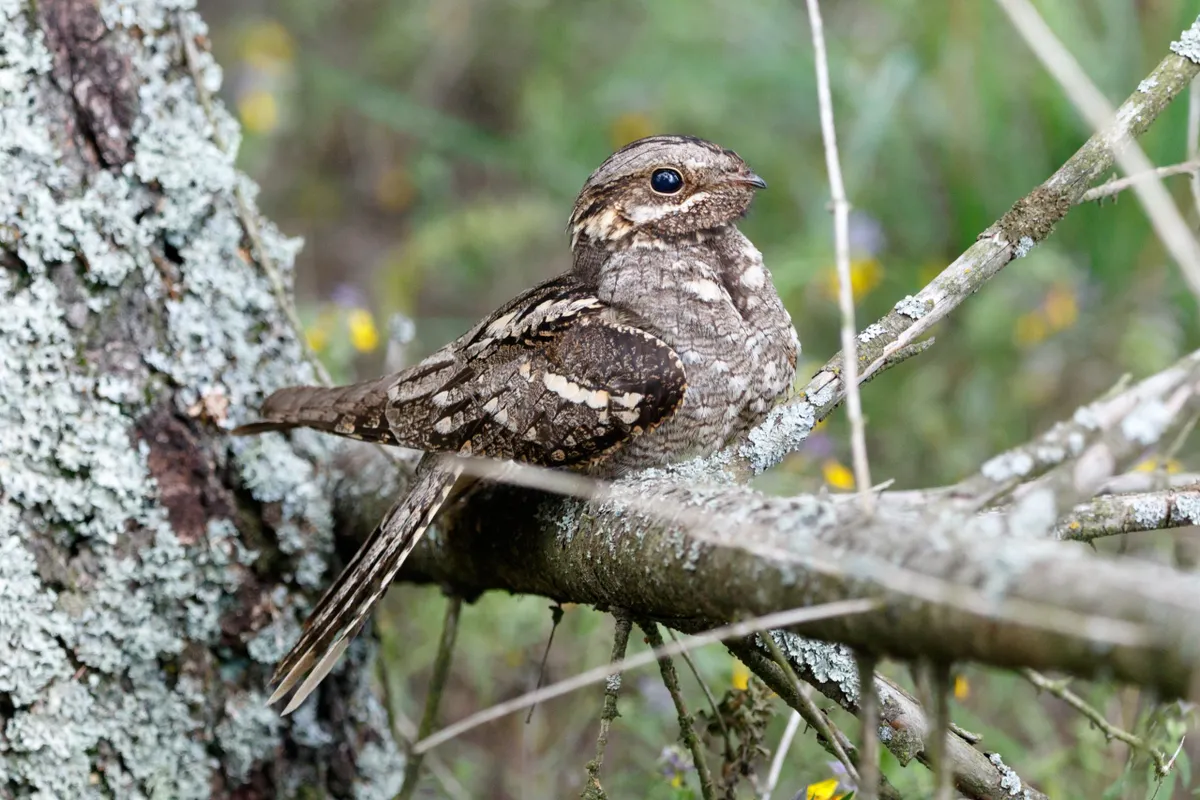
It is almost impossible to describe the churring of the nightjar. An insistent, eerie noise, somewhere between electronic, insect and the sonar of dolphins. Yet as these birds are crepuscular – which means they’re at their most active in low light – it might be your only clue that one is nearby.
The nightjar is a medium-sized bird, with bark-coloured plumage, a pointed tail and flat head. Males have white patches on their wings and tail tips. They eat moths, flies and beetles, and can be seen in open conifer woodland, heathland and moorland, specifically in southern England and Suffolk, parts of Wales and south-west Scotland.
During the spring mating season, the males have a particular way of attracting a match – wing-clapping – while rivals can also be glimpsed performing frantic display fights.
Nightjars hunt on the move and have a distinctive silhouette, their pointed wings and long tails calling to mind a kestrel or cuckoo. But to look at, they seem almost dragon-like, with reptilian eyes and grey-brown plumage that is part moth, part tree-bark, part lizard.
Add in their silent flight and that uncanny call, and it is no wonder that nightjars are a magnet for myth. In both Africa and Europe, nightjars have a reputation for stealing the milk of goats, not least because they are often to be found near livestock. In reality, of course, they are feasting on swarms of insects.
Nightjars don’t hang around after breeding. By mid-August, they will have started on their epic journey home.
Guide to nightjars
Chough
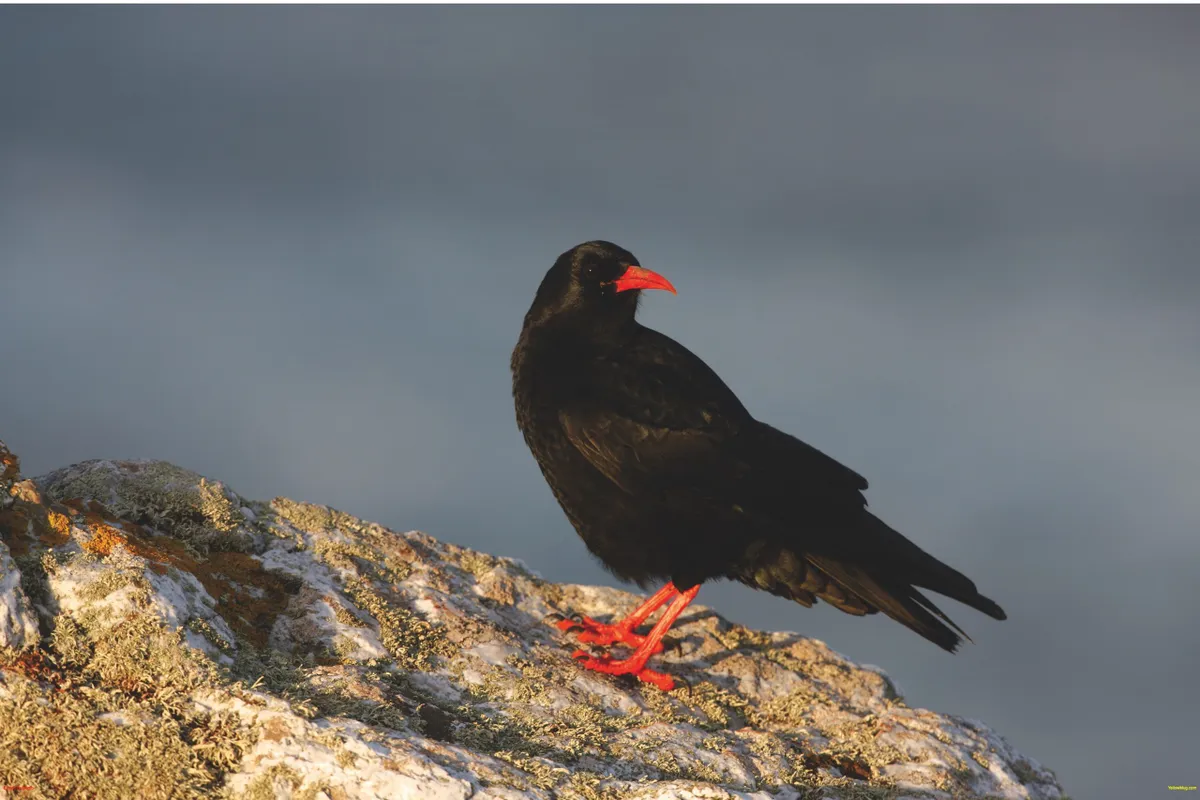
Larger than a jackdaw but smaller than a rook, this coastal-cliff specialist has a shiny black plumage, red bill and red legs. It lives near short turf where it feeds on soil-dwelling insects. There are 400 breeding pairs in the UK, including populations on the Calf of Man just south of the Isle of Man, South Stack on Anglesey and Strumble Head in Pembrokeshire.
Choughs rely on short pasture (5cm or less) to successfully forage for invertebrates. The ledges and crevices that line the cliffs add further allure, offering a safe site for this rare member of the crow family to nest.
Once a common bird, there are now only about 400 pairs of choughs in the UK. During the 19th century, farmers regarded the bird as an agricultural pest and many were trapped or shot. Others were lost to collectors.
More recently, land management changes have resulted in an increase in bracken and gorse, reducing the choughs’ favoured habitat.
These birds are now fully protected and land management by the RSPB, National Trust and local Wildlife Trusts has improved their chances of survival.
With their glossy black plumage, red bill and red legs, choughs are easy to identify. Their exuberant aerobatic romps and ‘chee-ow’ calls make them a delight to watch.
British seabird guide
Capercaillie
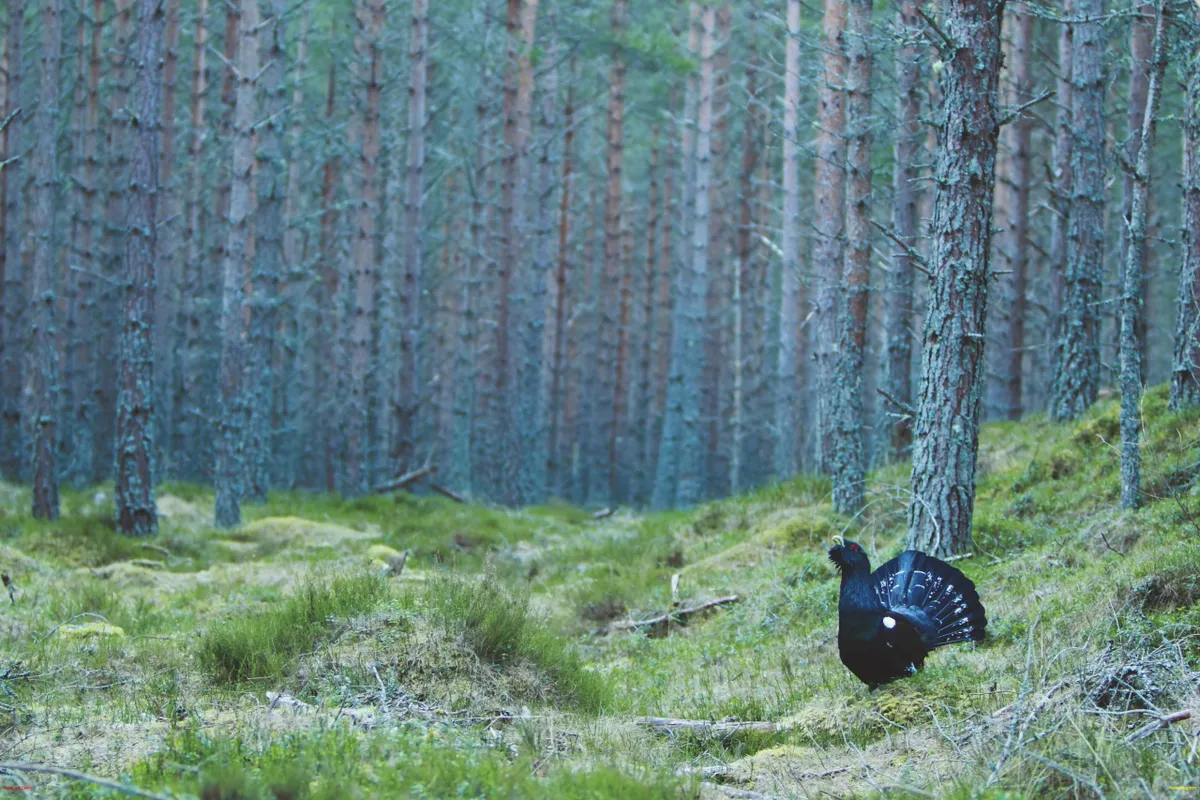
The adult male grows up to 87cm long and has dark plumage, while the smaller female has mottled black plumage with a rusty breast. All 1,110 UK birds live in Scotland, most notably in Strathspey, Aberdeenshire, Moray and Perthshire. They eat berries and shoots from their favoured habitat: Scots pine forest.
This huge bird is at a high risk of extinction – for the second time – but thankfully the forests of Abernethy and the wider Strathspey region remain a sanctuary for them, where more than 80% of the national population resides.
Between April and mid-May, the black-feathered males, each weighing around 4kg, gather at a breeding site, known as a lek. From first light, or even before, they begin to strut their stuff for the black-barred and mottled females. Hens come from over half a mile away, attracted by the males’ gurgling and popping calls, and a booming noise that is inaudible to humans.
Restricted habitats and wetter summers have resulted in low levels of breeding success, which have led to a population decline. There has also been an increase in deaths from collisions with deer fences.
Nightingale
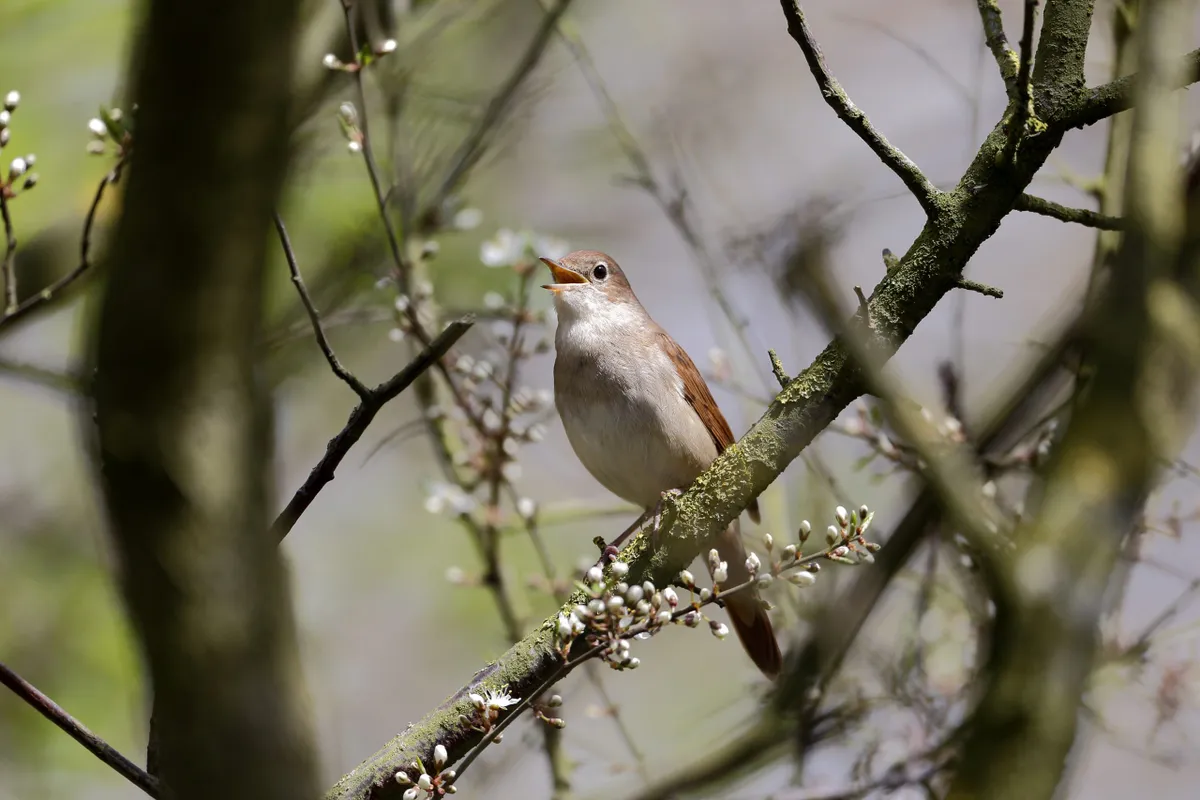
There are around 5,000 pairs of nightingale in Britain, almost all in the south-east of England, where their powerful song can be heard in thickets and dense wooded cover. It is similar in shape to a robin but slightly larger, with a pale chest and brown upperparts. Nightingales feed on ants, beetles and other insects.
Despite their spectacular voice, nightingales are shy, skulking birds, heard far more than they are seen. They are lovers of dense scrub, a tangle of hawthorn, blackthorn and bramble in which they can nest beyond the eyes of potential predators. Sadly, such habitat is becoming increasingly scarce, lost to development or our tendency for tidy-mindedness, and the nightingale population is in serious decline.
The nightingales arrive in spring, and the males waste little time in finding their voice. A mild evening in mid-May is probably the best time to listen out for nightingales. Their song is not particularly melodic, but the variety of notes and extraordinary clarity, alongside a vibrant rise and fall, will send a shiver down the spine. It is a sound we should treasure while we can.
Discover Britain's most beautiful songbirds
Roseate tern
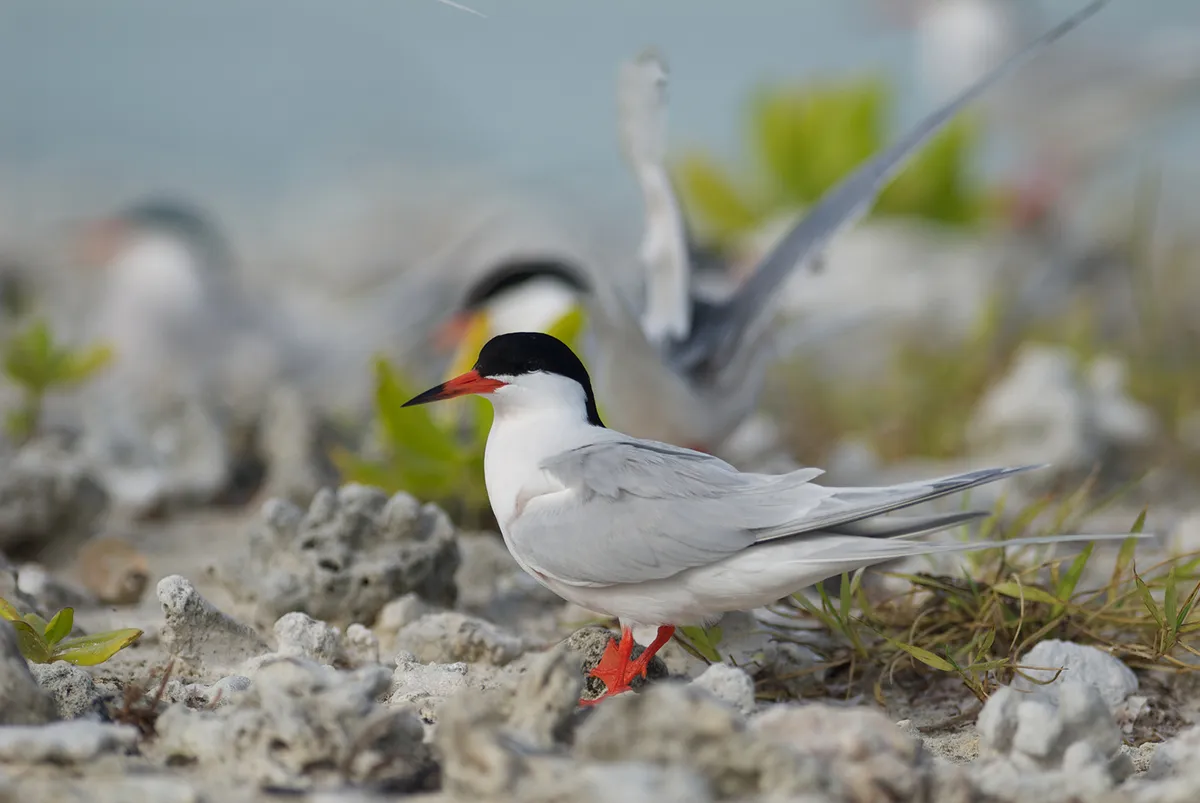
Slightly smaller than most other terns except the little tern, the roseate is distinguished by its pale pink breast, long tail feathers, black beak with red base and two-tone ‘chivik’ call. Small numbers can sometimes be found breeding on the Norfolk, North Wales and Channel coasts. Most spend the winter in West Africa.
Coquet Island – owned by the Duke of Northumberland but managed by the RSPB – lies a mile east of the fishing village of Amble. During spring and summer, the island is home to some 40,000 seabirds, including gulls, fulmars, kittiwakes, eiders, oystercatchers, puffins and four species of tern. Above the rocky terraces are numbered nest boxes, installed to protect the island’s – and indeed the UK’s – rarest breeding seabirds, the roseate tern, from predatory gulls.
Of the 4,000 pairs of terns on Coquet, roseates account for just 118 pairs (at a recent count), representing 90% of the UK population. This tiny colony, the only regular breeding colony in the UK, has grown steadily, if unspectacularly, from as few as 20 pairs over a 30-year period. It’s hoped that, as numbers continue to rise, the bird will spread to potential nesting sites on the mainland coast.
British seabird guide
Ring ouzel
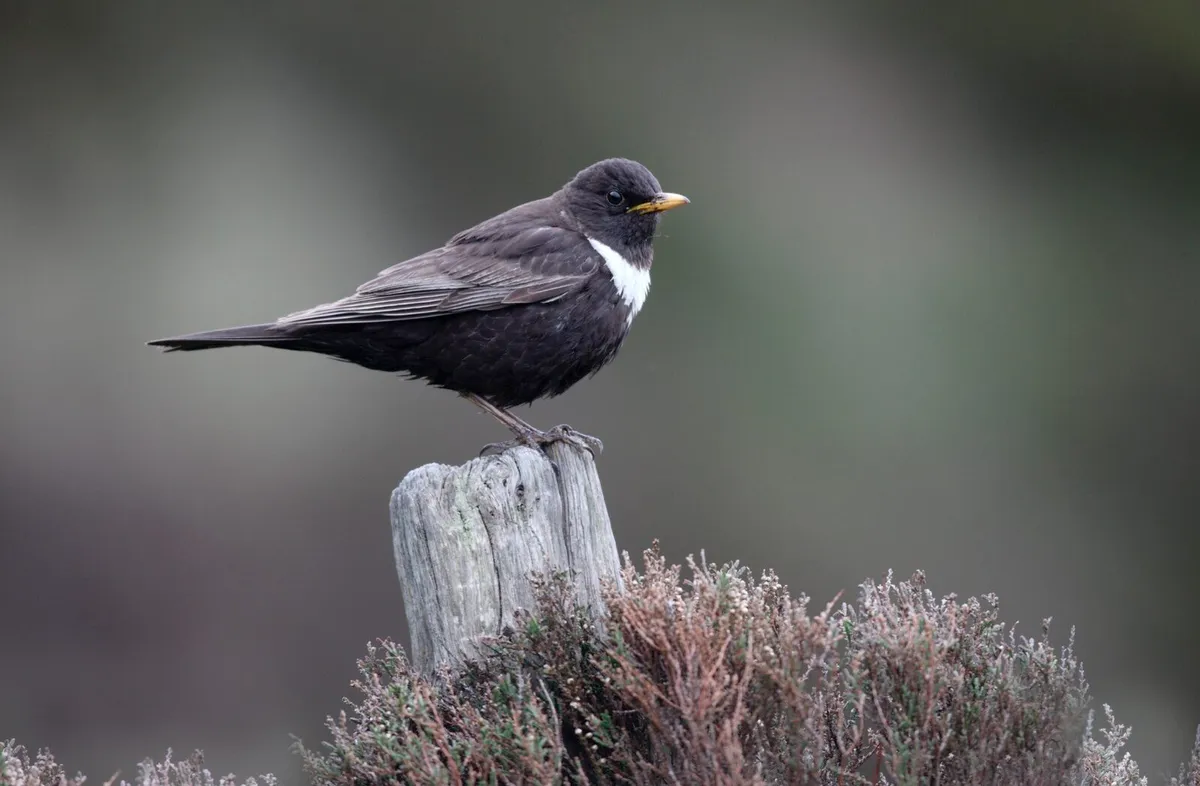
These black-and-white thrushes spend their winters in Spain and northern Africa, returning to Britain in spring and summer to breed. Males, darker in colour than females, sing from high points to claim their territory. They are found in upland areas across the UK, most notably in northern England, Snowdonia and Scotland.
Emily Brontë sketched a ring ouzel from Bewick’s A History of British Birds in 1829, a book that also enchanted Charlotte and her character Jane Eyre in the eponymous Gothic novel set around Hathersage. Here, ring ouzels nest at Stanage Edge high above the village. How have they fared since the Brontë era?
Not well. The ring ouzel – slightly smaller than the blackbird with a distinctive white breast band – has been depleted in the UK, threatened by predators and loss of habitat. On the last count, 6,348 pairs were recorded nationwide.
White-tailed eagle
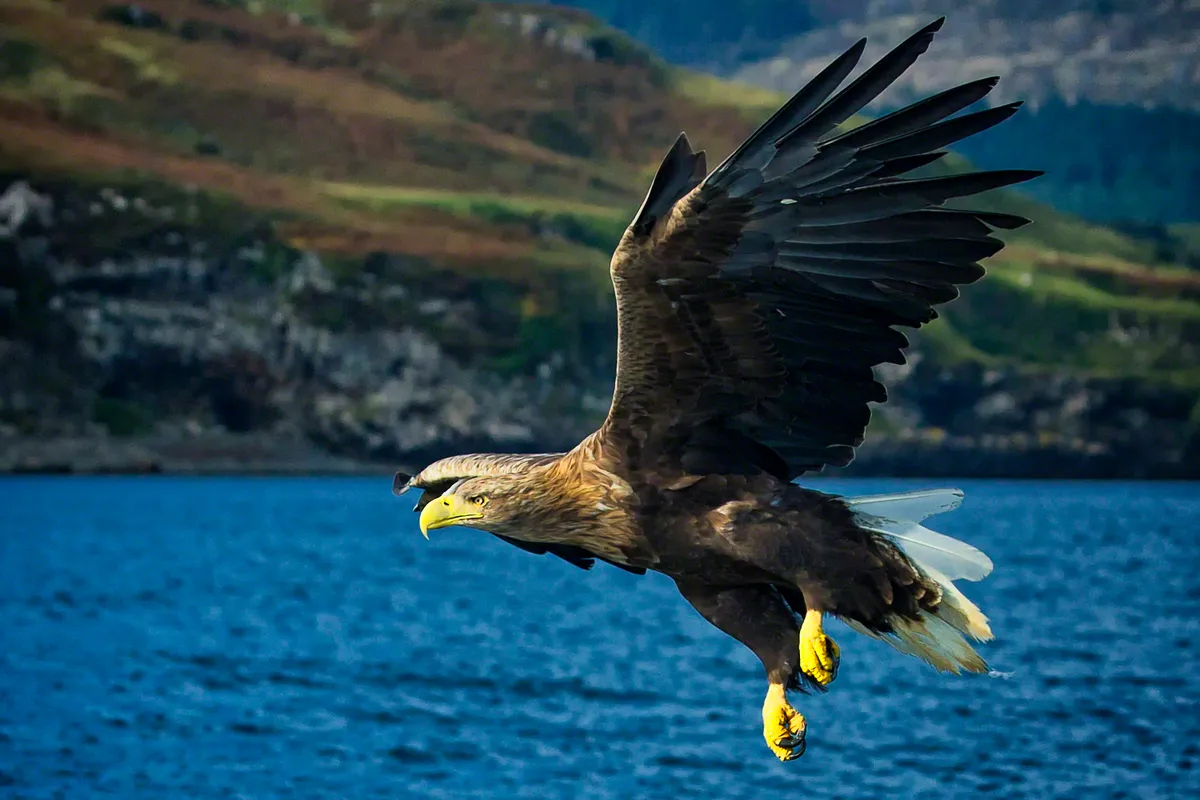
This huge bird has long, broad wings (2.5m wingspan) and a wedge-shaped tail, which is white on adult birds. It feeds on fish, water birds, carrion and occasionally lambs.
They are quite long-lived birds, surviving until about 20 years of age, and mate for life, although if one partner dies, the other will readily find a new one. Sea eagles have a spectacular courtship display, locking claws in mid-air and cartwheeling downwards, sometimes stopping only a few feet above the ground or water.
Once native and widespread in the British Isles, these massive top predators were hunted to extinction in Britain and Ireland by the early 20th century. But as time and industrialisation marched on, the birds also began to decline in their previous European strongholds.
Over 100 pairs breed in western Scotland, largely on the coast, while a reintroduction programme has now begun on the Isle of Wight.

